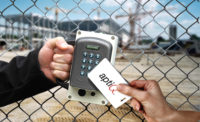
In the 21st century climate of globalism, everything from the economy to the Internet has a worldwide bent. It’s only natural that the security industry in general and access control in particular would eventually follow. It makes sense that companies that operate worldwide would want a uniform way of protecting their investments.
But how does an industry as diverse as access control — with so many disparate systems and cards and protocols — operate practically on a global basis? And how does the customer benefit when they can achieve it?
Not many systems integrators are operating on this scale yet — and those who do understand the potential problems and pitfalls better than most. But where it can be done successfully, the result is a very satisfied client.
TRENDING INTERNATIONAL
What is driving the demand for global access control systems?
“The IP address has made geography meaningless for the end user,” says Marty Guay, president and CEO of Niscayah Inc., North America, Norcross, Ga. “You can literally plug in the same system onto any IP network anywhere in the world. What’s more, IP allows for standardization, which is a great business concept that creates efficiency and reduces cost.”
While not all clients are looking at this, most integrators agree it is a trend that appears to be on the upswing.
“There are obvious economies of scale,” says Jim Kauker, executive vice president of sales and marketing, NAVCO, Anaheim, Calif. “The biggest challenge that our security professionals have in the marketplace today is trying to do more with less. If security professionals can manage security centrally they can make it more cost effective.”
Kirk Huss, systems engineer, Adesta, LLC, Omaha, Neb., agrees. “Customers that have facilities throughout the world want one way to manage who goes where, when, including employees, vendors and service providers.”
In addition, having a standardized security plan is preferable to doing things on an as-needs basis, Guay adds. “Ultimately this provides them better physical security at their facilities and sites. It is much easier to use and manage security from a central location when you have global access control that is program-driven as opposed to project-driven.”
Global customers, in essence, want a consistent but secure way to move around their various locations, says Tim Miller, vice president, government and commercial sales and design, ASG Security, Beltsville, Md. “We have customers with facilities in many countries around the world. As the global economy expands, there will be even more consolidation. The folks who are doing business from country to country want to have a commonality like they have in a single passport. They want a ‘security passport’ to gain access to where they belong at any facility.”
But wanting it and getting it are two different things. “Everyone is asking for it, but as yet no one integrator has scaled their business to take care of customers all over the world,” Guay says. “The true global solution from a systems integration service provider point-of-view is still pretty immature.”
THE GLOBAL PICTURE
What does a global access control system look like?
A true global system will have a single management platform, says Carl Stark, vice president, Qualified Systems Contracting Inc., Tampa, Fla. “That gives an organization, either through a single, regional or even international server the ability to manage everything from one location.”
This is probably the biggest and most complex feature of a global system.
“The challenge for the end user is that they are inheriting or purchasing other entities and having to deal with the infrastructure and system technologies that they have inherited,” Miller says. “It is very expensive to pull out that head-end, that set of readers, to repopulate with a single brand. Where the industry is going, and the solutions that we use that are attractive to these types of clients, is a middleware type of solution that has the ability to communicate or integrate with the various databases. Those independent systems can receive their command and instruction and act as a global system.”
Huss agrees. “What customers want to do is take a lot of legacy systems they already have and monitor all those from a central location to make it easier to manage and provide better security. The trend now is to a command-and-control type platform where all these disparate systems can talk via network integration into a common GUI. It ingests information from all these systems and presents it in an easy-to-use fashion. Most of these global cus-tomers have hundreds of different manufacturers’ systems provided from different people and thousands of access control cards. The cost to replace them is prohibitive. They want something that will sit over the top of all that.”
How this is accomplished by the integrator can vary. But there are some aspects that are key for a successful project.
“Our approach is always a holistic one, where we can use our strengths in security and communications industries to provide them with a good integrated solution,” Huss says. “We spend a lot of time up front finding out what their needs really are. How do they want the system to operate? What do they really want it to do? How will it be managed? Who will manage it? What do they see as their biggest security priority?”
Stark adds, “the most important part is to understand how complex the system will be. The more complex the system, the harder it will be to find qualified partners, either through a global security integrator or through international partners.”
The next step is to figure out who to work with on all sides to implement the access control project.
“There should be a management team assigned for the decision to select a manufacturer and there should be a management approach for implementation that should involve security, IT and real estate or property management to ensure their buy-in to the deployment of this system is obtained,” Stark adds.
“We have an international customers group,” Guay says. “There is a point person in each country to facilitate deployment. We have management and support structures to help the customer move business back and forth. It all comes down to management and communication.”
POTENTIAL PITFALLS
The very nature of the geographical distances and differences presents unique challenges and opportunities for both the integrator and the end user.
“Doing business in the U.S. is different than in other places,” Guay says. “Security markets look different in different areas. There are different technology legacies in other parts of the world. Strong systems in the U.S. may not be strong all over the world. It’s complicated. It’s a more complicated world. Technology allows you to do a lot, but you also have to understand what the customer is really trying to do at the end of the day. Just because an enterprise system allows it doesn’t mean you really need to do it.”
Other challenges arise when a customer wants to go to a country or region the integrator doesn’t have familiarity with. “If you are doing a project through your own infrastructure or sister country it’s one thing,” Guay relates. “But if you are going outside that infrastructure or subcontracting it, you have a whole new set of issues. Are you licensed to support the customer there? Do you have insurance to do business there? What is the implication of doing business there? Different countries all have different power issues, code issues, ways of doing business. It is complicated in the U.S., but much more so overseas.”
Miller agrees that an ordinarily simple aspect of a project can become complicated when doing business in other countries. “It can be something as simple as the need for clean power. Your product needs to have a global availability. You can’t plug it in otherwise. You need to be able to support it, wherever it is. Local personnel, whether it is the client or the teaming partner, have to be able to understand the basic operation.”
In a global situation, the importance of clear communication cannot be underestimated. “The language barrier is always there,” Huss says. “From a systems perspective, there are different codes and rules you have to follow in different countries that are unique to those countries. In some areas network infrastructure hasn’t even been built yet.
“There are huge challenges we face every day. The continuity of team and team members is of most importance to Adesta. We find that lends itself to projects that are completed on time and on budget.”
Clearly defined roles and expectations are indispensible, Kauker advises. “It’s all about defining roles, defining expectations and proper project management of delivering it. You have to make sure you have people who are qualified and trained in the products; make sure you have a strong support staff at the hub of where the head end is going to reside that can do programming remotely and set up the goals. If you don’t have those standards set for any kind of deployment, you are going to have people upset at the site and people who are frustrated at the head end.”
SIDEBAR: Moving Forward
Once a global access control system is planned, executed and installed, the job doesn’t end there. In a global installation, the issue of who is then going to manage and maintain the system can be multi-faceted.
“Typically what we have seen is, it is dispersed out to the regions for local management,” says Kirk Huss, systems engineer at Adesta, LLC, Omaha, Neb. “There may be five different regions globally. A central location that fits over the top is centrally managed typically from a technology standpoint from a master server. There are also regional servers. It is too big for one person or one group to manage.”
In some cases, the integrators themselves are the ones tapped for the job.
“Often an integrator could be used as a system administrator to manage a system of that scale,” says Carl Stark, vice president of Qualified Systems Contracting Inc., Tampa, Fla. “A corporation can actually outsource administration to the security integrator.”
At the very least, the end user and integrator need to come to an understanding of how and by whom maintenance will be performed in an international scenario.
“I stress to any client who is investing into their global security management system that they need to equally invest into its professional maintenance,” says Tim Miller, vice president, government and commercial sales and design, ASG Security, Beltsville, Md.
“It is really important for a customer that they have a service strategy or program after the fact,” relates Marty Guay, president and CEO of Niscayah Inc., North America, Norcross, Ga. “Everyone is more concerned about installing and deploying it. But what makes a system successful is servicing it properly and being proactive through a service program. That is what people sometimes leave out. Who does the customer call? How is that set up? How does that all work? We typically will not do a project if we can’t provide that. It leaves the customer exposed. Just installing and leaving is not a good situation for the customer. Then they have a better strategy for their copy machine than their security system.”
Ultimately, the global access control industry is still in its beginning stages, Guay adds. “The customer has a mature need and the integration market needs to mature into it. We’re not there yet. You are not going to find someone who can do it everywhere consistently that the customer needs it. A lot of us are trying to move there, but it’s going to take a while. The customer will always be ahead of us. They are bigger and will be in more places than we will.”





